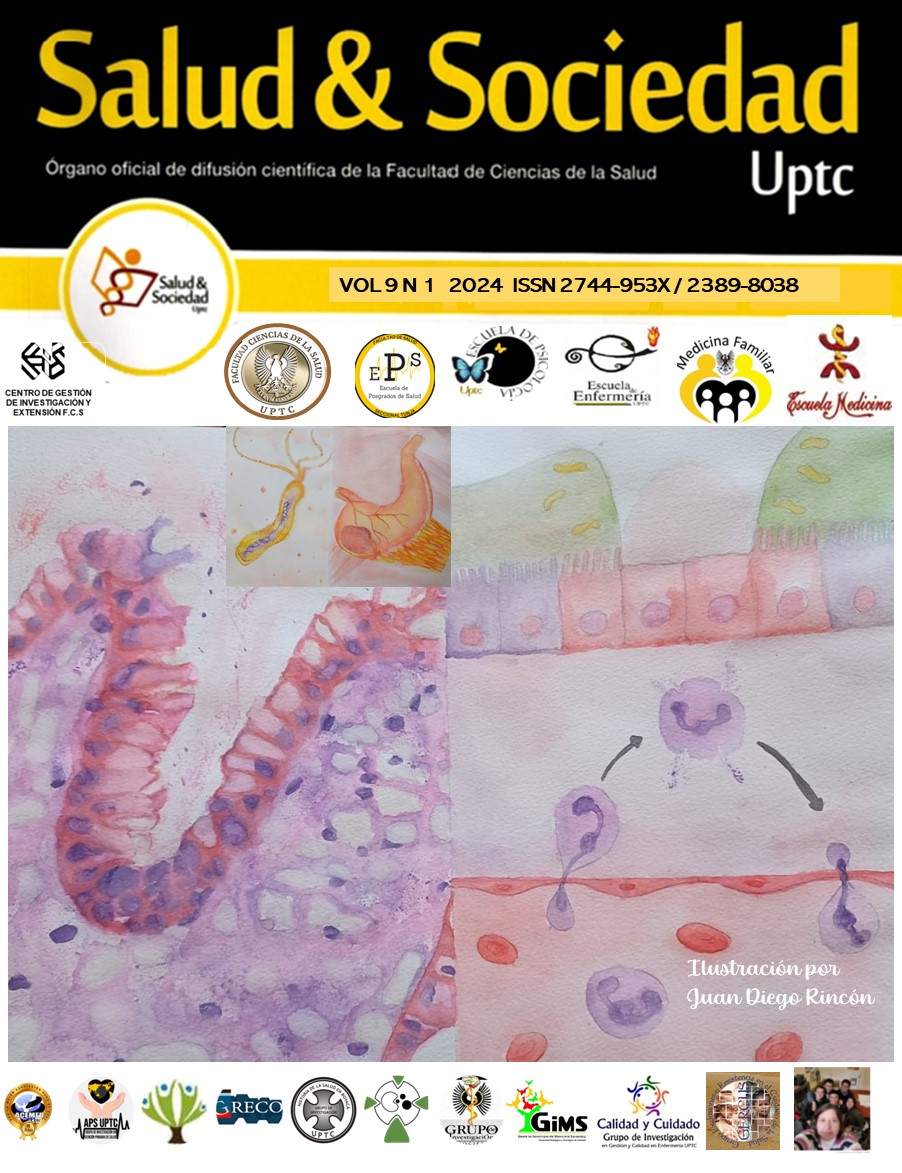Readmission rate of patients with a diagnosis of schizophrenia treated at a comprehensive rehabilitation center in Boyacá

Abstract
Context: Schizophrenia, a complex mental health disorder, is emerging as an area of significant concern, particularly due to its impact on the population. Objective: Estimate the readmission rate of patients with a diagnosis of Schizophrenia in the population over 18 years of age who entered the Boyacá Comprehensive Rehabilitation Center during the period June 2022 and June 2023. Materials and methods: an observational, descriptive cross-sectional study. The clinical records and demographic data of a group of 133 patients were examined; Of them, a sample composed of 16 patients over 18 years of age with a diagnosis of schizophrenia who received care for readmission at the Boyacá Comprehensive Rehabilitation Center during the study period was selected. Results: Calculated readmission rate of 12.8%; of the total readmitted patients, 75% male; The most prevalent group is those between 29 and 59 years old; 6.3% of readmissions were associated with dementia, another 6.3% with anxiety disorders, and an additional 6.3% with depressive disorders; Of the patients who were readmitted, 18.8% are affiliated with the National Police. Conclusions: The readmission rate highlights the need for more effective and personalized strategies in the care of patients with schizophrenia. The recurrence of hospitalizations indicates the complexity of managing the disease over time, highlighting the importance of continuous preventive and therapeutic interventions. The proportion of recurrences at the level of institutional affiliation suggests the need to implement the application of screening using valid and reliable instruments to early detect the risk of episodes and/or recurrences of this disease.
Keywords
Schizophrenia, Patient Readmission, Mental health
Author Biography
Adriana Lucia Burbano López
Médica especialista en Psiquiatría. Docente Escuela de Medicina Universidad Pedagógica y Tecnológica de Colombia
Miguel Santiago Paiba Montaña
Médico Interno. Universidad Pedagógica y Tecnológica de Colombia. Grupo de Investigación Clínica UPTC
Camilo Antonio Vega Useche
Médico Interno Universidad Pedagógica y Tecnológica de Colombia. Grupo de investigación en Atención Primaria en Salud
Juan David x Santacruz Ledezma
Médico Interno Universidad Pedagógica y Tecnológica de Colombia
References
- Ministerio de Salud y Protección Social. Plan Decenal de Salud Pública, 2012 2021: La salud en Colombia la construyes tú. Ministerio de Salud y Protección Social. 2013.
- Valencia CM. Trastornos mentales y problemas de salud mental. Día Mundial de la Salud Mental 2007. Salud Mental. 2007; 30(2):75–80.
- Martin, B. A., Kedward, H. B., & Eastwood, M. R. (1976). Hospitalization for mental illness: evaluation of admission trends from 1941 to 1971. Canadian Medical Association Journal, 115(4), 322–325.
- Talbott, J. A. (1974). Stopping the revolving door -a study of readmissions to a state hospital.
- The Psychiatric Quarterly, 48(2), 159–168. https://doi.org/10.1007/BF01584680
- Jaramillo L, Sánchez R, Herazo M. Factores relacionados con el número de rehospitalizaciones en pacientes psiquiátricos. Revista Colombiana de Psiquiatría. 2011;40:409-19
- Ortiz de Zárate-San Agustín, Amaia; Larreina-Zerain, Marixa; Aldeano-Merchán, Leire and Murua-Navarro. Flora. Trastorno mental grave de larga evolución. Ámsterdam; Barcelona: Elsevier-Masson, 2010.n ISBN:
- World Health Organization (WHO). International Statistical Classification of diseases and related health problems: Tenth revision (2nd Ed).
- Rose, S. O., & Hawkins, J. (1976). Decision to Admit to a Veterans Administration Hospital. Archives of General Psychiatry, 91343(34), 418–421.
- Dell’Acqua, G., Norcio, B., De Girolamo, G., Barbato, A., Bracco, R., Gaddini, A., Miglio, R., Morosini, P., Picardi, A., Rossi, E., Rucci, P., & Santone, G. (2007). Characteristics and activities of public psychiatric inpatient facilities: A national survey in Italy | Caratteristiche e attività delle strutture di ricovero per pazienti psichiatrici acuti: I risultati dell’indagine nazionale “Progres- Acuti.” Italian Journal of Psychopathology, 13(1), 26–39.
- Alvizo-García PG. (2021) Factores asociados al fenómeno de puerta giratoria en pacientes con trastornos psicóticos en hospital del noreste de México durante el periodo 2018-2020. Tesis de grado Psiquiatría. Tecnológico de Monterrey. Disponible: https://repositorio.tec.mx/handle/11285/643633
- B.J. Deacon. The biomedical model of mental disorder: A critical analysis of its validity, utility, and effects on psychotherapy research. Clin Psychol Rev., 33 (2013)
- Sukut, O., & Ayhan Balik, C. H. (2021). The impact of COVID-19 pandemic on people with severe mental illness. Perspectives in Psychiatric Care, 57(2), 953–956. https://doi.org/10.1111/ppc.12618
- E. Stengel. Classification of mental disorders. Bull World Health Organ., 21 (1959)
- L.A. Clark, B. Cuthbert, R. Lewis-Fernández, W.E. Narrow, G.M. Reed. Three approaches to understanding and classifying mental disorder: ICD-11, DSM-5, and the National Institute of Mental Health's Research Domain Criteria (RDoC). Psychol Sci Public Interest J Am Psychol Soc., 18 (2017)
